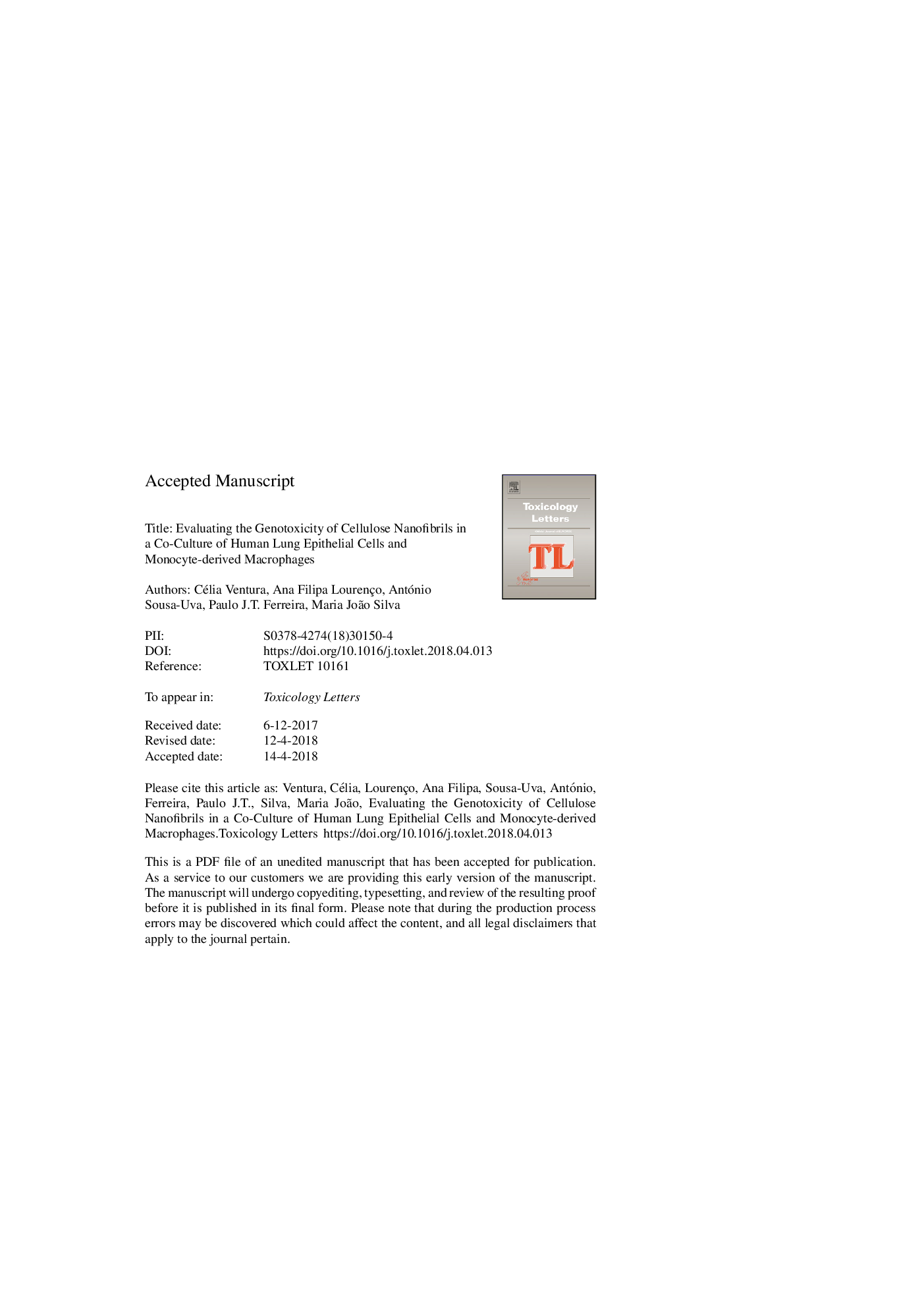| Article ID | Journal | Published Year | Pages | File Type |
|---|---|---|---|---|
| 8553289 | Toxicology Letters | 2018 | 45 Pages |
Abstract
Cellulose nanofibrils (CNF) are manufactured nanofibres that hold impressive expectations in forest, food, pharmaceutical, and biomedical industries. CNF production and applications are leading to an increased human exposure and thereby it is of utmost importance to assess its safety to health. In this study, we screened the cytotoxic, immunotoxic and genotoxic effects of a CNF produced by TEMPO-mediated oxidation of an industrial bleached Eucalyptus globulus kraft pulp on a co-culture of lung epithelial alveolar (A549) cells and monocyte-derived macrophages (THP-1 cells). The results indicated that low CNF concentrations can stimulate A549 cells proliferation, whereas higher concentrations are moderately toxic. Moreover, no proinflammatory cytokine IL-1β was detected in the co-culture medium suggesting no immunotoxicity. Although CNF treatment did not induce sizable levels of DNA damage in A549 cells, it leaded to micronuclei formation at 1.5 and 3â¯Î¼g/cm2. These findings suggest that this type of CNF is genotoxic through aneugenic or clastogenic mechanisms. Noteworthy, cell overgrowth and genotoxicity, which are events relevant for cell malignant transformation, were observed at low CNF concentration levels, which are more realistic and relevant for human exposure, e.g., in occupational settings.
Related Topics
Life Sciences
Environmental Science
Health, Toxicology and Mutagenesis
Authors
Célia Ventura, Ana Filipa Lourenço, António Sousa-Uva, Paulo J.T. Ferreira, Maria João Silva,
